Albino Armani Rosé Prosecco 75 cl. Origin.
Producer.
Name.
Rosé.
Variety.
Country of origin.
Region of origin.
Appellation of origin.
(UE)401/2010 Certification.
Denominazione di Origine Controllata (D.O.C.)
D.O.C. Prosecco.
Production region.
The production region of D.O.C. Prosecco is located in La provincia de Treviso, en la región de Veneto, Italia.
Weight.
1.500 gr. (1,5 Kg.).
EAN.
8022592145008
Producer |
|
Name |
Rosé. |
Variety |
|
Country of origin |
|
Region of origin |
|
Appellation of origin |
|
(UE)401/2010 Certification |
Denominazione di Origine Controllata (D.O.C.) |
Production region |
The production region of D.O.C. Prosecco is located in La provincia de Treviso, en la región de Veneto, Italia. |
Weight |
1.500 gr. (1,5 Kg.). |
EAN |
8022592145008 |
Albino Armani Rosé Prosecco 75 cl. Data sheet.
Typology.
Rosé sparkling.
D.O.C. Prosecco.
Variety.
Format.
Bottle.
Capacity.
75 cl.
Alcohol content.
12% Vol.
Weight.
1.500 gr. (1,5 Kg.).
Visual tasting note.
Steely reflections, Slow bubble, Sensual, Soft bubbles.
Olfactory tasting note.
Grapefruit, Light, Mild smoked, Black cherry.
Tasting note.
Aging notes, Light, Mineral input.
Recommended pairing.
Tartar, Processed seafood, Fruit desserts.
Consumption temperature.
6ºC.
Consumption.
It is recommended to drink in moderation and demonstrate a responsible consumption of alcoholic beverages.
Typology |
|
Variety |
|
Format |
Bottle. |
Capacity |
75 cl. |
Alcohol content |
12% Vol. |
Weight |
1.500 gr. (1,5 Kg.). |
Visual tasting note |
Steely reflections, Slow bubble, Sensual, Soft bubbles. |
Olfactory tasting note |
Grapefruit, Light, Mild smoked, Black cherry. |
Tasting note |
Aging notes, Light, Mineral input. |
Recommended pairing |
Tartar, Processed seafood, Fruit desserts. |
Consumption temperature |
6ºC. |
Consumption |
It is recommended to drink in moderation and demonstrate a responsible consumption of alcoholic beverages. |
Albino Armani Rosé Prosecco 75 cl. Description.
Comments.
33 Customer reviews.
Customers rating.
Product reference.
WAN4564947
EAN.
8022592145008
Accessories.
This product is provided in the conditions and format in which it is marketed at the current time. In cases where the product includes an additional packaging, box and/or case, These accessories will be included in the shipment as long as they comply with the dimensions of the special packaging adapted and approved for the transport of beverages.
In general, the images of the products that we publish on our website are only relevant for graphic purposes. The images do not show other accessories such as additional packaging (box, case, etc.) or promotional elements that may occasionally be included by the manufacturer along with the product. If you wish, we can inform you about the additional packaging, elements and accessories included with the product at the current time.
Weight.
1.500 gr. (1,5 Kg.).
Actual price.
16,95 €
Minimum order quantity.
1 Unit.
Shipping deadline.
 Spain: 4,90 € (Up to 10Kg/6 bottles)
Spain: 4,90 € (Up to 10Kg/6 bottles)
Delivery term: Information and prices.
Storage position.
Lateral position, horizontal bottle.
Storage temperature.
Store at a constant temperature between 10-17ºC.
Humidity should be constant around 60-80%.
Recommendations.
Keep preferably away from light.
Comments |
33 Customer reviews. |
Customers rating |
|
Product reference |
WAN4564947 |
EAN |
8022592145008 |
Accessories |
This product is provided in the conditions and format in which it is marketed at the current time. In cases where the product includes an additional packaging, box and/or case, These accessories will be included in the shipment as long as they comply with the dimensions of the special packaging adapted and approved for the transport of beverages. |
Weight |
1.500 gr. (1,5 Kg.). |
Actual price |
16,95 € |
Minimum order quantity |
1 Unit. |
Shipping deadline |
|
Storage position |
Lateral position, horizontal bottle. |
Storage temperature |
Store at a constant temperature between 10-17ºC. |
Recommendations |
Keep preferably away from light. |
Albino Armani Rosé Prosecco 75 cl. Legal notice.
Please keep in mind.
The information provided and referred to the product features and details has been provided by the expert, manufacturer or producer or published on the official sites. In no case can it be considered as assessment made by our team, unless expressly stated otherwise.
We suggest you to refer to the comments and reviews posted by our customers and users to expand and contrast this information.
Misreading.
Our team provides this information and details in ESPAÑOL language.
If you browse in another language note that the information contained may have been translated from the original language through an automated real-time process that has not been supervised by our human team.
In case of doubt, misunderstanding or misreading about the content of this information you should refer to the original version of this page or contact our customer service team.
Product image.
The product image or its label is only relevant for graphic purposes, so it may not match the identification of the vintage or other features and details of the product for sale. This product is provided in the conditions and format in which it is marketed at the current time.
This product is not identified or supplied in a specific vintage. The product image and label may not match the vintage identification or other characteristics and details of the product for sale.
Accessories.
This product is provided in the conditions and format in which it is marketed at the current time. In cases where the product includes an additional packaging, box and/or case, These accessories will be included in the shipment as long as they comply with the dimensions of the special packaging adapted and approved for the transport of beverages.
In general, the images of the products that we publish on our website are only relevant for graphic purposes. The images do not show other accessories such as additional packaging (box, case, etc.) or promotional elements that may occasionally be included by the manufacturer along with the product. If you wish, we can inform you about the additional packaging, elements and accessories included with the product at the current time.
Country of origin.
Spain. This product is shipped from Spain.
Legal Notice.
It is against the law to sell or supply alcohol to, or to obtain alcohol on behalf of a person under the age of 18 years.
If you are not more than 18 years old, you must leave this website.
Shipping deadline.
 Spain: 4,90 € (Up to 10Kg/6 bottles)
Spain: 4,90 € (Up to 10Kg/6 bottles)
Delivery term: Information and prices.
Return policy.
Return policy.
Last update: Monday, 22 Jan 2024
For further information: Terms and conditions of the service.
Please keep in mind |
The information provided and referred to the product features and details has been provided by the expert, manufacturer or producer or published on the official sites. In no case can it be considered as assessment made by our team, unless expressly stated otherwise. |
Misreading |
Our team provides this information and details in ESPAÑOL language. |
Product image |
The product image or its label is only relevant for graphic purposes, so it may not match the identification of the vintage or other features and details of the product for sale. This product is provided in the conditions and format in which it is marketed at the current time. |
Accessories |
This product is provided in the conditions and format in which it is marketed at the current time. In cases where the product includes an additional packaging, box and/or case, These accessories will be included in the shipment as long as they comply with the dimensions of the special packaging adapted and approved for the transport of beverages. |
Country of origin |
Spain. This product is shipped from Spain. |
Legal Notice |
It is against the law to sell or supply alcohol to, or to obtain alcohol on behalf of a person under the age of 18 years. |
Shipping deadline |
|
Return policy |
Return policy. |
33 Reviews of customers and website users. ( During the last 90 days )
Albino Armani Rosé Prosecco 75 cl.
Additional information.
«Albino Armani Rosé Prosecco» is produced by Albino Armani. In the elaboration of «Albino Armani Rosé Prosecco» the grape varieties that are used are Pinot Black and Glera. «Albino Armani Rosé Prosecco» is a product from Italy. The production region of «Albino Armani Rosé Prosecco» is Veneto. It is certified with D.O.C. Prosecco. The production region of D.O.C. Prosecco is located in La provincia de Treviso, en la región de Veneto, Italia. The weight of «Albino Armani Rosé Prosecco» is 1.500 grams (1,5 Kg.). «Albino Armani Rosé Prosecco» is identified and marketed with the barcode EAN 8022592145008.
«Albino Armani Rosé Prosecco» belongs to the Rosé sparkling category, Rosé sparkling Appellation of origin D.O.C. Prosecco. In the elaboration of «Albino Armani Rosé Prosecco» the grape varieties that are used are Pinot Black and Glera. «Albino Armani Rosé Prosecco» is marketed in bottle 75 cl format. The alcohol content of «Albino Armani Rosé Prosecco» is 12% Vol. The weight of «Albino Armani Rosé Prosecco» is 1.500 grams (1,5 Kg.). Regarding the tasting of «Albino Armani Rosé Prosecco», the notes steely reflections, slow bubble, sensual and soft bubbles stand out in its visual phase. Among the predominant notes of the olfactory tasting are grapefruit, light, mild smoked and black cherry. Finally, The tasting of «Albino Armani Rosé Prosecco» in the taste phase stands out with aging notes, light and mineral input. It is recommended to pair «Albino Armani Rosé Prosecco» with tartar, processed seafood and fruit desserts. The optimum temperature to consume «Albino Armani Rosé Prosecco» is 6ºC.
A total of 33 valuations have been made about «Albino Armani Rosé Prosecco» in PrivateCeller.es. Consumers and users from PrivateCeller.es rated «Albino Armani Rosé Prosecco» with an average score of 4.94 out of 5. «Albino Armani Rosé Prosecco» is identified and marketed with the barcode EAN 8022592145008. The weight of «Albino Armani Rosé Prosecco» is 1.500 grams (1,5 Kg.). The final sale price of «Albino Armani Rosé Prosecco» is 16,95 € in PrivateCeller.es.
The information provided and referred to the product features and details has been provided by the expert, manufacturer or producer or published on the official sites. In no case can it be considered as assessment made by our team, unless expressly stated otherwise. We suggest you to refer to the comments and reviews posted by our customers and users to expand and contrast this information. The product image or its label is only relevant for graphic purposes, so it may not match the identification of the vintage or other features and details of the product for sale. This product is provided in the conditions and format in which it is marketed at the current time. Spain. This product is shipped from Spain.
Appellation of origin:
D.O.C. Prosecco.
Albino Armani Rosé Prosecco 75 cl.
 Español [ ES ]
Español [ ES ]Historia.
A principios del s. XVI, en Trieste, el vino local denominado "ribolla" fue celebrado como la recreación del antiguo vino Pucino, mencionado ya por Plinio el Viejo en su Historia Natural y muy apreciado por Livia, la esposa del emperador Augusto, por sus propiedades medicinales. La necesidad de distinguir el "Ribolla" de Trieste de otros vinos conocidos por el mismo nombre que se producían en Gorizia o en la costa de Istria provocó que se le cambiara el nombre a finales de dicha centuria. Siguiendo el lugar de producción durante la Antigüedad, se le llamó "castellum nobile vinum Pucinum", en referencia al castillo situado en Contovello, muy cerca de Prosecco (al norte de Trieste). Hasta los años 1960, el vino espumoso prosecco era generalmente dulzón y apenas distinguible del vino Asti Spumante producido en Piamonte. Desde entonces, las técnicas de producción han mejorado, llevando a los vinos secos de gran calidad que se elaboran hoy en día.6 De acuerdo a un reportaje de 2008 en el New York Times, "el prosecco ha incrementado mucho su popularidad en los mercados fuera de Italia, con las ventas globales creciendo en porcentajes de dos dígitos desde 1998, ayudado también por su comparativamente bajo precio". Fue introducido en el mercado norteamericano en el año 2000 por Mionetto, hoy el mayor importador de prosecco, que también ha destacado una increíble tendencia de crecimiento. El prosecco está protegido como DOC en Italia1 como Prosecco di Conegliano-Valdobbiadene, Prosecco di Conegliano y Prosecco di Valdobbiadene. Desde 2009, ha sido promocionado a DOCG.
Ubicación.
Prosecco DOC nació en un área con condiciones ambientales únicas. El área de producción de Prosecco DOC se encuentra en el noreste de Italia, y más precisamente en los territorios que se encuentran en 4 provincias de Friuli Venezia Giulia (Gorizia, Pordenone, Trieste y Udine) y 5 provincias de Veneto (Belluno, Padua, Treviso, Venecia, Vicenza ), uno de los territorios más bellos de toda Italia. Si la recolección, la elaboración del vino y el embotellado se realizan por completo dentro de las provincias de Treviso y Trieste, se pueden utilizar los títulos especiales Prosecco DOC Treviso y Prosecco DOC Trieste. Dos provincias que han jugado un papel fundamental en la historia de la producción de Prosecco.
Las uvas.
Las uvas utilizadas para hacer Prosecco DOC son principalmente de la variedad Glera, un tipo nativo del noreste de Italia y reconocido desde la época romana. La Glera es una variedad de uva blanca . Tiene vides de color marrón nuez y produce racimos largos y generosos de uvas de color amarillo dorado. El cultivo implica el entrenamiento vertical de los brotes y el adelgazamiento, así como pellizcos y ataduras para crear el microclima perfecto para alentar a las sustancias aromáticas a asentarse en las uvas. Tradicionalmente, Glera se puede combinar con hasta un 15% de uvas Verdiso, Bianchetta Trevigiana, Perera, Glera lunga, Chardonnay, Pinot Bianco, Pinot Grigio y Pinot nero, vinificadas de las pieles.
Vinificación.
Una vez que se han recogido las mejores uvas, se puede producir el vino blanco, transformando azúcares en alcohol y dióxido de carbono. La actividad de la levadura, también conocida como fermentación, dura alrededor de 15-20 días a una temperatura máxima de 18°C, para preservar los aromas y sabores más delicados. La primera variedad que se embotella es Prosecco Tranquillo, mientras que las variedades Frizzante y Spumante requieren una segunda fermentación natural. La segunda fermentación, que utiliza el Método italiano también conocido como Método Martinotti, se produce en grandes cámaras de presión llamadas autoclaves. Así es como el vino adquiere sus famosas burbujas. Hacia el final del proceso de producción de vino espumoso, que lleva al menos 30 días, la temperatura se reduce para finalizar la fermentación, dejando un contenido de azúcar residual que le da al vino un sabor equilibrado y uniforme. Los diferentes aromas de los vinos Frizzante y Spumante son particularmente interesantes. Los vinos frizzante evocan principalmente aromas de glicina y limón, mientras que en los vinos Spumante encontrarás notas de manzana, rosa y plátano.
Tipos de Prosecco.
Un alma, una tierra y muchos matices se unen para hacer tres tipos de Prosecco DOC. Con un aroma floral y afrutado, y un sabor fresco, ligero y vivo, Prosecco DOC es el símbolo de una bebida simple y refinada, intrínsecamente ligada al inconfundible estilo de vida Made in Italy. Las uvas utilizadas para Prosecco DOC son principalmente Glera, una variedad típica cultivada en el noreste de Italia desde la época romana. La glera es un tipo de uva blanca. Sus ramas son de color marrón oscuro y producen una gran cantidad de uvas de color pajizo. Existen tres de Prosecco, tres burbujas diferentes. Spumante, el tipo más famoso y extendido tiene burbujas finas y persistentes. Gracias a su contenido de azúcar, PDO Prosecco Spumante puede ser Brut , Extra Dry, Dry o Demi-sec. El Prosecco Frizzante que tiene burbujas ligeras y menos persistentes, y el Prosecco Tranquilo que no tiene burbujas.
El consumo.
En Italia, el prosecco se disfruta como un vino para cualquier ocasión. Fuera de Italia, se consume mayoritariamente como aperitivo, principalmente como el champán. Como otros vinos espumosos, el prosecco se sirve frío. Al contrario que el champán, el prosecco no fermenta en botella y se vicia con el tiempo, por lo que debe ser bebido lo antes posible y preferiblemente antes de que tenga dos años. La mayor parte de los proseccos alcanzan su mejor punto cuando son consumidos tres años después de su recogida, pero los proseccos de alta calidad pueden alcanzar hasta siete años. En comparación con otros vinos espumosos, el prosecco es bajo en alcohol, conteniendo un 11 o 12 por ciento de alcohol por volumen. El sabor del Prosecco se ha descrito como intensamente aromático y fresco, evocando la manzana amarilla, la pera, el melocotón blanco o el albaricoque. Al contrario que el champán, apreciado por su rico sabor y complejos aromas secundarios, la mayor parte de las variantes de prosecco tienen intensos aromas primarios y están pensados para que sepan fresco y ligero. Habitualmente, el prosecco se sirve sin mezclar, pero también aparece en bastantes mezclas. Era el ingrediente original del cóctel Bellini y el Spritz, y también puede reemplazar al champán en otros cócteles como la mimosa. Con vodka y sorbete de limón, el prosecco es también un ingrediente del cóctel italiano sgroppino.
Rosé sparkling D.O.C. Prosecco
Product Selection Rosé sparkling D.O.C. Prosecco.
Albino Armani Rosé Prosecco 75 cl.
Variety:
Pinot Black and Glera.
Albino Armani Rosé Prosecco 75 cl.
Variety Pinot Black.
See Pinot Black Rosé sparkling list.
 Español [ ES ]
Español [ ES ]Origen.
La variedad pinot negro, o más conocida con el nombre en francés pinot noir, pertenece a la familia de las uvas pinot y, aunque no está muy claro el origen de la variedad, se piensa que la pinot noir fue la primera de la familia de las pinot, y una de las primeras variedades obtenidas a partir de viñas silvestres en la parte occidental de Europa Central. A la región del Lago de Constanza llegó alrededor del año 900. En la región de Rheingau comenzó a cultivarse en el siglo XIII. Los perfiles de ADN de la pinot gris y la pinot blanc son idénticos a los de la pinot noir, así que parece claro que se derivan de ella. Sea como sea, las pinot son una familia, y una familia muy querida, entre las que se cuentan otras mutaciones como la pinot meunier o la pinot gouges o musigny. El nombre pinot noir es de origen francés y, probablemente, de las palabras pino (pine) y negro (noir), ya que esta variedad tiene los racimos en forma de cono, como las piñas.
Características.
Las cepas medianamente vigorosas, de porte tumbado, y presentan un desborre y maduración precoces. Desarrollan racimos pequeños, cilíndricos o cónicos, de forma similar a una piña, muy compactos y uniformes, con pedúnculo corto y sin lignificación. Las uvas son pequeñas o medianas y esféricas, tienen una piel oscura, casi negra y azulada, presentando una cicatriz estilar muy marcada y de difícil desprendimiento de su pedúnculo. A pesar de tener un hollejo grueso, es muy sensible al agrietado y a los roces. La pulpa es antociánica, poco o nada pigmentada, blanda y muy jugosa con sabor herbáceo. ES una variedad muy delicada en su cultivo, ya que es muy sensible a las enfermedades fúngicas de la madera a la botritis y al desecado del raspón. Es sensible al mildiu, al oídio y al corrimiento climático, así como a la polilla del racimo, a los cicadélidos y a los ácaros. Se adapta bien a climas templados y a todo tipo de suelos, siempre que tengan buen drenaje, aunque lo ideal sería elegir suelos argilocalcáreos. Es sensible a los fríos primaverales y muy sensible a temperaturas excesivas en verano, ya que se solean sus racimos y pierde muy pronto sus hojas. En climas cálidos madura muy rápidamente y es sensible a las quemaduras solares del fruto. Tiene altas necesidades de magnesio, respondiendo muy bien a los aportes de fósforo y tiene bajos requerimientos en nitrogeno y potasio. La variedad pinot noir recibe también el nombre de Spätburgunder, burgunder, pineau, klevner, plant fin, noirien, pinoz y dorada.
Zonas de cultivo.
La pinot noir es originaria del viñedo de Borgoña, concretamente de la región de Côte-d'Or. También se planta en Italia, España, Alemania, Luxemburgo, Hungría, Kosovo, la Macedonia del Norte, Moldavia, Grecia, Rumanía, Serbia, Eslovenia, Suiza, Bulgaria, República Checa, Eslovaquia, Ucrania, el norte de Croacia, la República de Georgia, Israel, Chile, Argentina, Uruguay, México y Estados Unidos. En Alemania se cultivan unas 11.800 hectáreas de pinot noir, conocida como spätburgunder, lo que representa más del diez por ciento del total de las parras en el país. La mayoría de los viñedos de pinot noir se hallan en Baden (casi 5.900 hectáreas) y en el Palatinado (casi 1.600 hectáreas). Otras regiones importantes de cultivo son Rheinhessen, Wurtemberg, Rheingau y la cuenca del Ahr.
Vinos.
La variedad pinot noir produce mostos con mucho azúcar, siempre que la uva haya tenido una maduración correcta. Estos mostos, de acidez media, recien prensados son incoloros, pero si se mantienen en contacto con los hollejos, rápidamente toman un color primero rosa intenso y posteriormente rojo rubí intenso muy brillante aunque con reflejos marronáceos, por ello pueden dar vinos blancos por sangrado o escurrido rápido y tintos en elaboraciones habituales. Produce un vino de alta calidad apto para crianza, fino, con intensidad y complejo. Es una variedad adecuada para cavas, champagne y vinos de aguja y también para vinos de crianza con cuerpo y vigor, con alta complejidad aromática. El gran rango de buqués, sabores, texturas e impresiones que produce el pinot noir a veces confunde a los que lo prueban. Grosso modo, sus vinos tienden a tener un cuerpo de ligero a medio, con reminiscencias aromáticas a cereza, frambuesa y, en menor medida, grosella, y a otras pequeñas frutas rojas y negras. Tradicionalmente, el tinto de Borgoña de esta variedad es famoso por su sabrosa intensidad, aromas "granjeros" (característica asociada con el tiol y con otros compuestos), pero con el cambio de las modas, las técnicas de vinificación y con clones más modernos y fáciles de cultivar se ha favorecido un vino con más sabores a frutas y con un estilo más limpio.
Rosé sparkling Pinot Black
Product Selection Rosé sparkling Pinot Black.
Albino Armani Rosé Prosecco 75 cl.
Variety Glera.
See Glera Rosé sparkling list.
 Español [ ES ]
Español [ ES ]Origen.
La uva glera es una variedad de vitis vinífera blanca que se utiliza en la elaboración del prosecco. La uva fue introducida en Italia desde Eslovenia y durante cientos de años se ha cultivado, en un principio en Prosecco, próxima a Trieste, y también en las regiones de Veneto y Friuli Venecia Julia, produciendo vinos espumosos Prosecco de varias DOC Y DOCG. Se cree que es una variedad antigua, ya cultivada en tiempos de los romanos, probablemente para el vinum pucinum convocado por Plinio el Viejo, aunque este extremo no ha podido acreditarse. Hasta dos mil nueve esta variedad era conocida como prosecco, nombre relacionado con la villa donde se cultivaba.
Características.
La uva Glera es una variedad altamente productiva y de maduración tardía. Tiene una alta acidez y un paladar bastante neutro, por lo que es ideal para la producción de vino espumoso, aunque en algunas ocasiones se utilice para elaborar vinos tranquilos. La uva Glera es una variedad altamente productiva y de maduración tardía. Tiene una alta acidez y un paladar bastante neutro, por lo que es ideal para la producción de vino espumoso, aunque en algunas ocasiones se utilice para elaborar vinos tranquilos. El perfil aromático de la Glera se caracteriza por los melocotones blancos, con una nota jabonosa en ciertas ocasiones. El vino es de cuerpo ligero y bajo en alcohol por lo que resulta una refrescante bebida de verano o aperitivo. La glera también es conocida con los sinónimos ghera, glere, grappolo spargolo, posecco tondo, prosecco, prosecco balbi, prosecco bianco, prosecco nostrano, prosecco tondo, proseko sciprina, serpina y uva pissona. Fuera de Italia, Glera se cultiva en Eslovenia y Australia, en particular en King Valley.
Data sheet.
Albino Armani Rosé Prosecco 75 cl.
Rosé sparkling. Albino Armani. Rosé. D.O.C. Prosecco. Veneto. Italy. Pinot Black, Glera. 75 cl..
Variety.
Country of origin.
Region of origin.
Appellation of origin.
Format.
Bottle.
Capacity.
75 cl.
Alcohol content.
12% Vol.
Visual tasting note.
Steely reflections, Slow bubble, Sensual, Soft bubbles.
Olfactory tasting note.
Grapefruit, Light, Mild smoked, Black cherry.
Tasting note.
Aging notes, Light, Mineral input.
Recommended pairing.
Tartar, Processed seafood, Fruit desserts.
Consumption temperature.
6ºC.
Typology.
Rosé sparkling.
D.O.C. Prosecco.
Producer.
Name.
Rosé.
Weight.
1.500 gr. (1,5 Kg.).
EAN.
8022592145008
Comments.
33 Customer reviews.
Customers rating.
Product reference.
WAN4564947
Actual price.
16,95 €
Minimum order quantity.
1 Unit.
Shipping deadline.
 Spain: 4,90 € (Up to 10Kg/6 bottles)
Spain: 4,90 € (Up to 10Kg/6 bottles)
Delivery term: Information and prices.
Please keep in mind.
The information provided and referred to the product features and details has been provided by the expert, manufacturer or producer or published on the official sites. In no case can it be considered as assessment made by our team, unless expressly stated otherwise.
We suggest you to refer to the comments and reviews posted by our customers and users to expand and contrast this information.
Misreading.
Our team provides this information and details in ESPAÑOL language.
If you browse in another language note that the information contained may have been translated from the original language through an automated real-time process that has not been supervised by our human team.
In case of doubt, misunderstanding or misreading about the content of this information you should refer to the original version of this page or contact our customer service team.
Product image.
The product image or its label is only relevant for graphic purposes, so it may not match the identification of the vintage or other features and details of the product for sale. This product is provided in the conditions and format in which it is marketed at the current time.
This product is not identified or supplied in a specific vintage. The product image and label may not match the vintage identification or other characteristics and details of the product for sale.
Return policy.
Return policy.
Last update: Monday, 22 Jan 2024
For further information: Terms and conditions of the service.
Country of origin.
Spain. This product is shipped from Spain.
(UE)401/2010 Certification.
Denominazione di Origine Controllata (D.O.C.)
D.O.C. Prosecco.
Production region.
The production region of D.O.C. Prosecco is located in La provincia de Treviso, en la región de Veneto, Italia.
Storage position.
Lateral position, horizontal bottle.
Storage temperature.
Store at a constant temperature between 10-17ºC.
Humidity should be constant around 60-80%.
Recommendations.
Keep preferably away from light.
Accessories.
This product is provided in the conditions and format in which it is marketed at the current time. In cases where the product includes an additional packaging, box and/or case, These accessories will be included in the shipment as long as they comply with the dimensions of the special packaging adapted and approved for the transport of beverages.
In general, the images of the products that we publish on our website are only relevant for graphic purposes. The images do not show other accessories such as additional packaging (box, case, etc.) or promotional elements that may occasionally be included by the manufacturer along with the product. If you wish, we can inform you about the additional packaging, elements and accessories included with the product at the current time.
Legal Notice.
It is against the law to sell or supply alcohol to, or to obtain alcohol on behalf of a person under the age of 18 years.
If you are not more than 18 years old, you must leave this website.
Consumption.
It is recommended to drink in moderation and demonstrate a responsible consumption of alcoholic beverages.
Variety |
|
Country of origin |
|
Region of origin |
|
Appellation of origin |
|
Format |
Bottle. |
Capacity |
75 cl. |
Alcohol content |
12% Vol. |
Visual tasting note |
Steely reflections, Slow bubble, Sensual, Soft bubbles. |
Olfactory tasting note |
Grapefruit, Light, Mild smoked, Black cherry. |
Tasting note |
Aging notes, Light, Mineral input. |
Recommended pairing |
Tartar, Processed seafood, Fruit desserts. |
Consumption temperature |
6ºC. |
Typology |
|
Producer |
|
Name |
Rosé. |
Weight |
1.500 gr. (1,5 Kg.). |
EAN |
8022592145008 |
Comments |
33 Customer reviews. |
Customers rating |
|
Product reference |
WAN4564947 |
Actual price |
16,95 € |
Minimum order quantity |
1 Unit. |
Shipping deadline |
|
Please keep in mind |
The information provided and referred to the product features and details has been provided by the expert, manufacturer or producer or published on the official sites. In no case can it be considered as assessment made by our team, unless expressly stated otherwise. |
Misreading |
Our team provides this information and details in ESPAÑOL language. |
Product image |
The product image or its label is only relevant for graphic purposes, so it may not match the identification of the vintage or other features and details of the product for sale. This product is provided in the conditions and format in which it is marketed at the current time. |
Return policy |
Return policy. |
Country of origin |
Spain. This product is shipped from Spain. |
(UE)401/2010 Certification |
Denominazione di Origine Controllata (D.O.C.) |
Production region |
The production region of D.O.C. Prosecco is located in La provincia de Treviso, en la región de Veneto, Italia. |
Storage position |
Lateral position, horizontal bottle. |
Storage temperature |
Store at a constant temperature between 10-17ºC. |
Recommendations |
Keep preferably away from light. |
Accessories |
This product is provided in the conditions and format in which it is marketed at the current time. In cases where the product includes an additional packaging, box and/or case, These accessories will be included in the shipment as long as they comply with the dimensions of the special packaging adapted and approved for the transport of beverages. |
Legal Notice |
It is against the law to sell or supply alcohol to, or to obtain alcohol on behalf of a person under the age of 18 years. |
Consumption |
It is recommended to drink in moderation and demonstrate a responsible consumption of alcoholic beverages. |

 Italy
Italy France
France Argentina
Argentina United States
United States Australia
Australia Portugal
Portugal Chile
Chile New Zealand
New Zealand South Africa
South Africa





 Germany
Germany Austria
Austria




 Tokaj-Hegyalja
Tokaj-Hegyalja
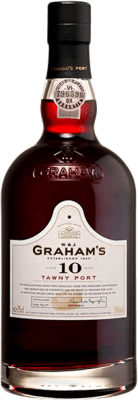








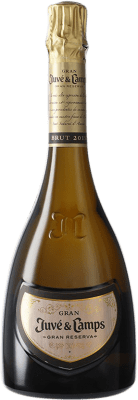
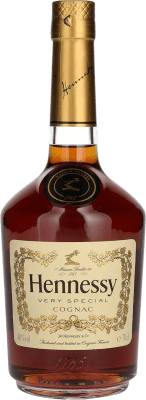


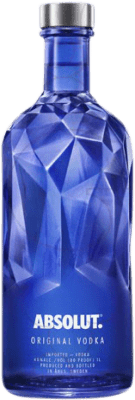


 Français
Français
 Deutsch
Deutsch
 Italiano
Italiano
 Português
Português
 中文
中文
 Русский
Русский
 日本語
日本語
 Belgium
Belgium
 Bulgaria
Bulgaria
 Croatia
Croatia
 Cyprus
Cyprus
 Czech Republic
Czech Republic
 Denmark
Denmark
 Estonia
Estonia
 Finland
Finland
 Greece
Greece
 Ireland
Ireland
 Latvia
Latvia
 Liechtenstein
Liechtenstein
 Lithuania
Lithuania
 Luxembourg
Luxembourg
 Monaco
Monaco
 Netherlands
Netherlands
 Norway
Norway
 Poland
Poland
 Romania
Romania
 San Marino
San Marino
 Slovakia
Slovakia
 Slovenia
Slovenia
 Spain, Balearic Islands
Spain, Balearic Islands
 Spain, Canary Islands
Spain, Canary Islands
 Sweden
Sweden
 Switzerland
Switzerland
 United Kingdom
United Kingdom

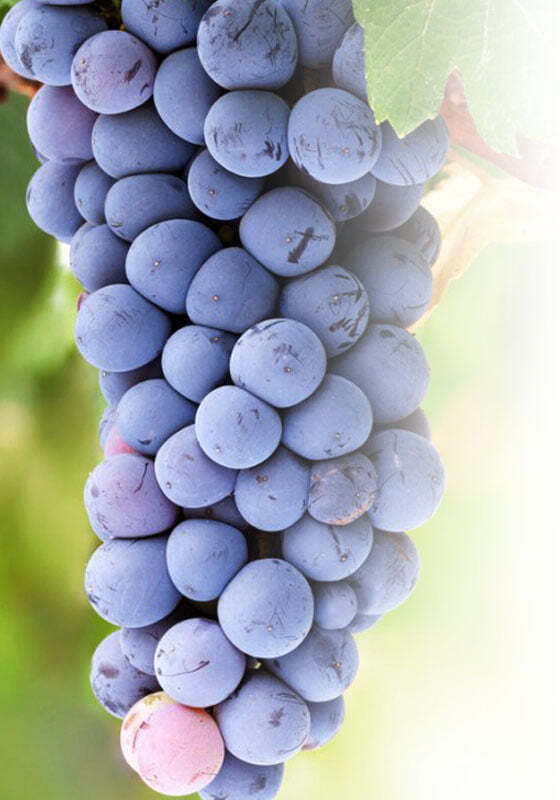
 EUR, Final price!
EUR, Final price!

































En mi opinión, es excelente. No me ha decepcionado
Por mucho que busques, va a ser muy difícil encontrar algo tán maravilloso
Vale su peso en oro
Delicioso y un precio inmejorable.
Una combinación de inusual que funciona extraordinariamente bien. espumoso rosado de la casa, perfecto el precio.
Si quereis algo distinto, buen precio, algo bonito y además, que esté bueno, pues ya sabéis lo que tenéis que hacer: Comprarlo en esta plataforma maravillosa
Un 10 y porque no se puede dar más nota
Potencia a raudales
Ideal para tomar en vacaciones con los tuyos
Aconsejable para gente exigente que quiere poner en su mesa lo mejor
Sabroso y jugoso
Totalmente recomendable, incluso para los no bebedores
Redondo
Untuoso y con la acidez justa. Toques florales, y hierbas aromáticas. Nos ha encantado!
Para tomarlo en la montaña tranquilamente
Muy disfrutable, como todos los productos de esta marca
Espumoso de primera calidad.
Un buen Espumoso a precio justo. Excelente que siempre agrada manteniendo un equilibrio casi perfecto entre calidad y precio.
Muy vistoso
Es diferente a otros del mismo precio. Nos gusta y se ha convertido en el preferido de nuestra casa
Sin acidez.
Es bueno, no es acido. Los malos al tomarlos se notan en el estómago. Este se toma bien. No tengo problemas me adapto a los buenos Rosado. Vengan de donde vengan.
Delicioso, con una gran patada seca
Buen color y buen gusto, excelente relación calidad-precio. Definitivamente voy a pedir más: me encanta vuestro servicio.
Muy buena calidad
Nariz muy compleja y expresiva. Buena persistencia en boca y de gran estructura! Excelente calidad para su precio¡ Muy recomendable.